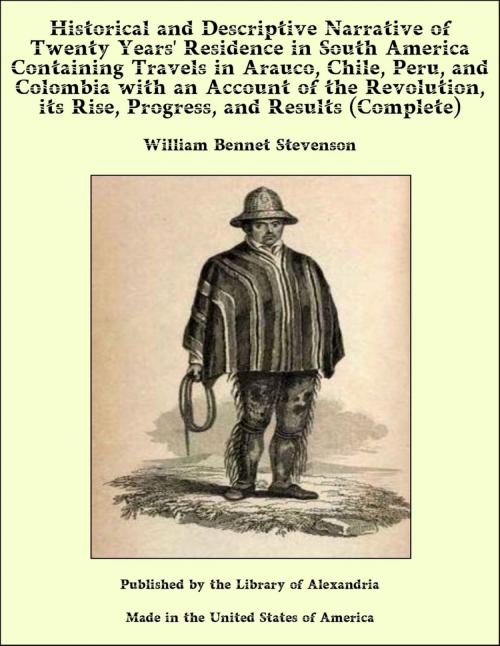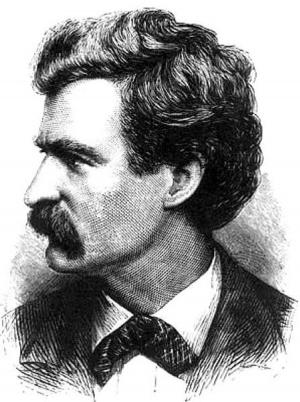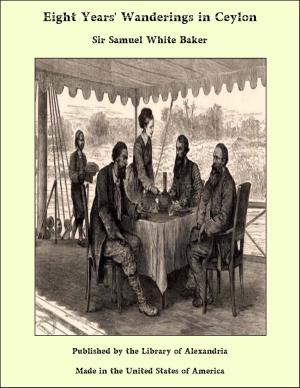Historical and Descriptive Narrative of Twenty Years' Residence in South America Containing Travels in Arauco, Chile, Peru, and Colombia with an Account of the Revolution, its Rise, Progress, and Results (Complete)
Nonfiction, Religion & Spirituality, New Age, History, Fiction & Literature| Author: | William Bennet Stevenson | ISBN: | 9781465617415 |
| Publisher: | Library of Alexandria | Publication: | March 8, 2015 |
| Imprint: | Language: | English |
| Author: | William Bennet Stevenson |
| ISBN: | 9781465617415 |
| Publisher: | Library of Alexandria |
| Publication: | March 8, 2015 |
| Imprint: | |
| Language: | English |
On the 14th of February, 1804, I landed on the Island of Mocha, after a passage of upwards of five months from England, during which we passed between the Cape de Verd Islands, and touched at one of them called Mayo, for the purpose of procuring salt, which appears to be the only article of commerce. It is produced by admitting the sea water on flats, embanked next to the sea, during the spring tides, and allowing it to evaporate: the salt is then collected and carried off before the return of the high tides, when the water is again admitted, and the same process takes place. The sea water is here strongly impregnated with salt, owing probably to the great evaporation caused by the intense power of the heat, which also aids and hastens the process on shore. The inhabitants whom I saw were all blacks, with the solitary exception of a priest, and many of them in a state of nudity, even to an age at which decency if not modesty requires a covering. A small quantity of bananas, the only fruit we could procure, and some poultry, were brought from St. Jago's, another of the islands, visible from Mayo. The Island of Mocha, situate in 38° 21´ S. and that called Santa Maria, lying about 80 miles to the northward of it, were the patrimony of a family, now residing at Conception, of the name of Santa Maria, who lived on the latter, and sent some people to reside at Mocha, but after the commencement of the war between England and Spain, in 1780, the family, as well as the whole of the inhabitants, were ordered by the government of Chile to quit the islands, under the pretence that these were a resort for smugglers: a pretence derived from the common error, that privacy is preventive of contraband. During the time that Mocha was in the possession of the Santa Marias a number of the original indian inhabitants, belonging to the tribe found on it when first visited by the Spaniards in 1549, resided there, but they were also removed to Conception. These two islands having been once inhabited, there are yet to be found some few remains of cattle, which have continued toprocreate: on Mocha are horses and pigs, and some barn door fowls. Mocha is about fifteen miles in circumference, hilly in the centre, and sloping towards the coast, more so on the western side, where a tolerably good anchorage and a safe landing place, on a sandy beach, may be found. Fresh water flows from several springs; wild turnips, mint and other herbs grow in abundance; the trees on the hilly part are principally the white cinnamon, named by the Spaniards canelo, the magui, the luma, a tree called espino, and others. Here are also apple, peach and cherry trees, with a variety of wild strawberries, and myrtle-berries. Some solitary seals yet remain on the rocks on the south side of the island.
On the 14th of February, 1804, I landed on the Island of Mocha, after a passage of upwards of five months from England, during which we passed between the Cape de Verd Islands, and touched at one of them called Mayo, for the purpose of procuring salt, which appears to be the only article of commerce. It is produced by admitting the sea water on flats, embanked next to the sea, during the spring tides, and allowing it to evaporate: the salt is then collected and carried off before the return of the high tides, when the water is again admitted, and the same process takes place. The sea water is here strongly impregnated with salt, owing probably to the great evaporation caused by the intense power of the heat, which also aids and hastens the process on shore. The inhabitants whom I saw were all blacks, with the solitary exception of a priest, and many of them in a state of nudity, even to an age at which decency if not modesty requires a covering. A small quantity of bananas, the only fruit we could procure, and some poultry, were brought from St. Jago's, another of the islands, visible from Mayo. The Island of Mocha, situate in 38° 21´ S. and that called Santa Maria, lying about 80 miles to the northward of it, were the patrimony of a family, now residing at Conception, of the name of Santa Maria, who lived on the latter, and sent some people to reside at Mocha, but after the commencement of the war between England and Spain, in 1780, the family, as well as the whole of the inhabitants, were ordered by the government of Chile to quit the islands, under the pretence that these were a resort for smugglers: a pretence derived from the common error, that privacy is preventive of contraband. During the time that Mocha was in the possession of the Santa Marias a number of the original indian inhabitants, belonging to the tribe found on it when first visited by the Spaniards in 1549, resided there, but they were also removed to Conception. These two islands having been once inhabited, there are yet to be found some few remains of cattle, which have continued toprocreate: on Mocha are horses and pigs, and some barn door fowls. Mocha is about fifteen miles in circumference, hilly in the centre, and sloping towards the coast, more so on the western side, where a tolerably good anchorage and a safe landing place, on a sandy beach, may be found. Fresh water flows from several springs; wild turnips, mint and other herbs grow in abundance; the trees on the hilly part are principally the white cinnamon, named by the Spaniards canelo, the magui, the luma, a tree called espino, and others. Here are also apple, peach and cherry trees, with a variety of wild strawberries, and myrtle-berries. Some solitary seals yet remain on the rocks on the south side of the island.















